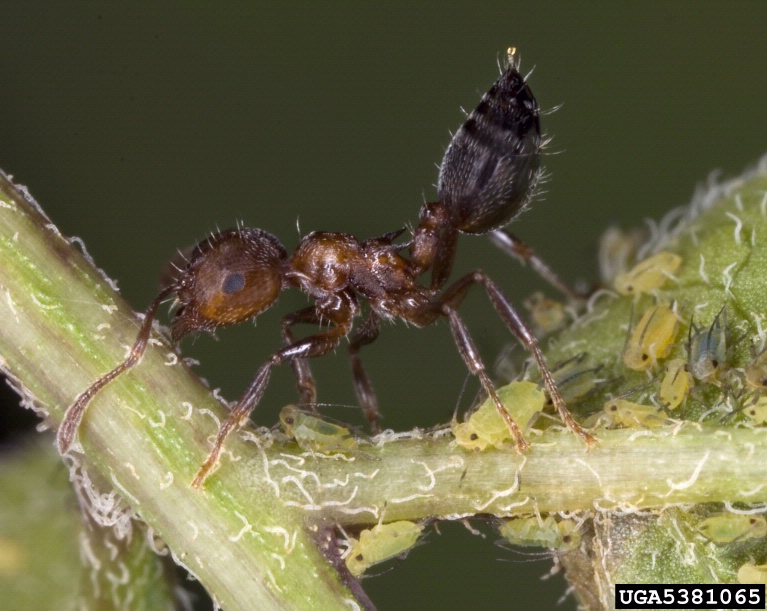
Acrobat Ants
Howard Russell, Sarah Hughson
Acrobat Ants
Acrobat ants (Crematorgaster spp.) get their common name from their habit of raising their abdomen over their head and thorax. The workers are known to bite aggressively and to give off a repulsive odor when alarmed. In nature, colonies may nest in exposed soil, under stones, stumps and old trees. They occasionally become pests by invading homes where they are known to nest in woodwork and foam insulation, and infest household foods. They feed on live and dead insects, and they tend aphids for their sugary excrement known as “honeydew.” In homes, they show a slight preference for sweets and meats or other high protein foods.
Winged forms are adults that are capable of reproducing. They usually appear in the fall of the year. When these appear inside homes, it is a good indication there is a nest of acrobat ants located inside the home.
Control measures
The best method of controlling acrobat ants in the home is to locate the nest and treat it directly with cyfluthrin (Bayer Advanced Home)*. If the nest cannot be located, poisoned bait may offer some help in reducing their numbers. Baits are less effective when used during the summer months when the ant’s favorite foods are plentiful. Baits can be purchased or prepared by mixing a cup of jelly and a few tablespoons of ground up dry dog or cat food with a teaspoon of boric acid powder. Put a teaspoon of the bait on a jar lid and place this where the ants are seen most frequently. Replace the bait when it dries out or as needed. Be sure to place the bait in locations that are not accessible to children or pets.
*Closely follow the directions for use on the pesticide label for a safe and effective application. Ensure that your target pest (ants) and your area of application (inside homes) are indicated on the pesticide label.

Original article by Howard Russell
Article reviewed by Sarah Hughson, May 2025



 Print
Print Email
Email





